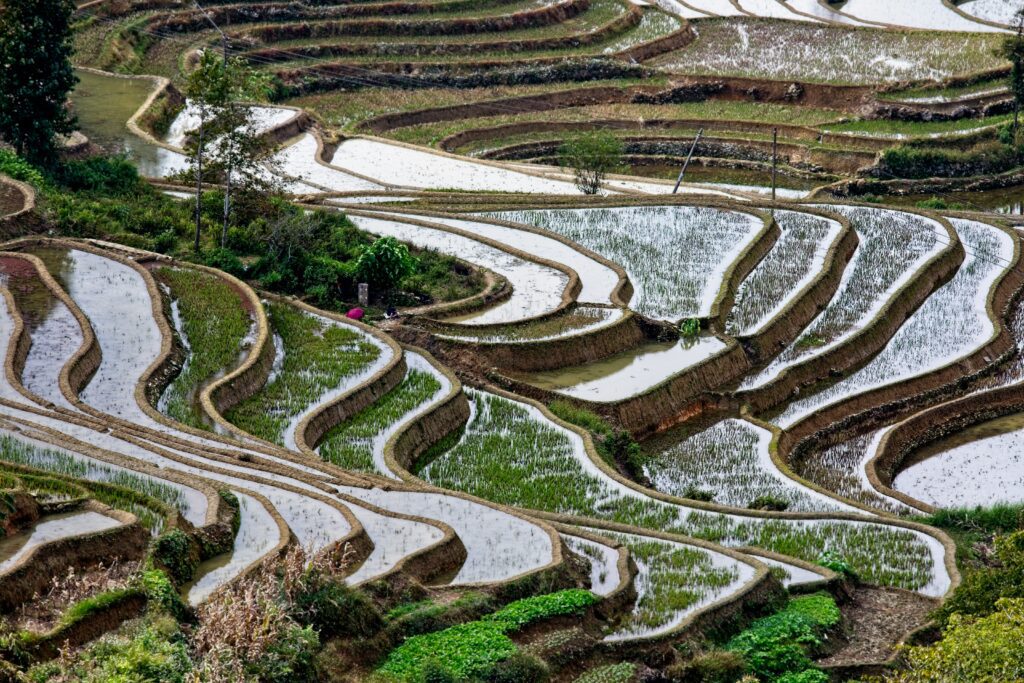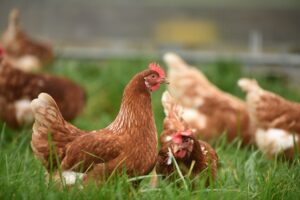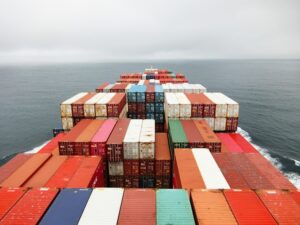China, the world’s largest agricultural importer, has set ambitious targets to significantly reduce its reliance on overseas food purchases over the next decade. These targets are part of a broader push for food security, but experts warn they will be exceedingly difficult to meet, writes Mei Mei Chu in a recent article for Reuters. With limited land and water resources, China will need to dramatically increase agricultural productivity through technology and expand the area under cultivation to meet its 10-year goals.
The government’s vision, detailed in a document released in late April, aims for 92% self-sufficiency in staple grains and beans by 2033, up from 84% during 2021 to 2023, writes Reuters. This effort aligns with Chinese President Xi Jinping’s long-term goal of making China an “agriculture power” by the mid-21st century.
Reducing imports would impact global agricultural markets, particularly for countries like the U.S., Brazil, and Indonesia, which have heavily invested in meeting China’s demand for soybeans, meat, and grains. The Chinese Ministry of Agriculture projects a 75% reduction in corn imports to 6.8 million tons and a 60% reduction in wheat imports to 4.85 million tons over the next decade. For soybeans, the largest item on China’s agricultural import bill, Beijing aims to reduce imports by 21% to 78.7 million tons.
These targets contrast sharply with the trends of the past decade, where grain and oilseed imports surged by 87%, according to the Reuters. “Forecasting a sharp reversal over the next decade seems questionable,” said Darin Friedrichs, co-founder of Shanghai-based Sitonia Consulting, in a commentary for the publication. Analysts and industry executives cite China’s lack of land and water as the main challenges to meeting these targets.
The U.S. Department of Agriculture (USDA) provides a contrasting forecast, expecting China’s corn imports to remain near current levels and wheat imports to decline by only 20%. In a significant divergence, the USDA predicts soybean imports will increase by 39%.
Food security has long been a critical issue for China, a nation with a painful history of famine. China must feed nearly 20% of the global population with less than 9% of the world’s arable land and 6% of its water resources. The urgency to reduce dependence on imports has intensified following supply chain disruptions during the COVID-19 pandemic and the Russia-Ukraine conflict.
According to Reuters, China will implement a food security law starting June 1, mandating absolute self-sufficiency in staple grains. Local governments will be required to incorporate food security into their economic and development plans. This new law will support other initiatives to boost food production, such as increased grains insurance for farmers and a recent drive to raise grain output by at least 50 million tons by 2030.
Despite these efforts, China faces significant obstacles. The country has expanded corn, soybean, potato, and oilseed production by cultivating previously unused land and encouraging farmers to switch from cash crops to staples. Yet, even with record corn production of 288.84 million metric tons last year, imports surged to nearly 27.1 million tons due to the higher quality and lower cost of imported corn.
China’s production growth is constrained by insufficient arable land, small production scales, and limited agricultural technology. The country’s per capita arable land is less than one-third of Brazil’s and one-sixth of the U.S., according to World Bank data. Additionally, much of China’s land is degraded or polluted, with a significant share being rocky or desert areas.
To address these challenges, China is investing heavily in research to cultivate water-intensive crops like rice in desert regions such as Inner Mongolia and Xinjiang, writes Reuters. Techniques to turn sand into soil and breed saline-tolerant crops aim to create more farmland, though this will require substantial investments in fertilizer, irrigation, and biotechnology.
China is also working to consolidate its fragmented farms, which average only 0.65 hectares compared to 187 hectares in the U.S. and 60 hectares in Germany. The adoption of genetically modified (GM) crops is another strategy, with recent approvals for high-yielding, insect-resistant corn and soybean varieties, as well as gene-edited, disease-resistant wheat.
Despite these efforts, experts remain skeptical about the feasibility of meeting the government’s import reduction targets. “At best, China could reduce its dependence on soybean imports to 70% from more than 80% now,” said Carl Pray, an agriculture professor at Rutgers University, in a commentary to Reuters. He noted that replacing high-protein soybean imports for tofu with high-oil varieties for cooking oil would be particularly challenging, even with advanced research.














